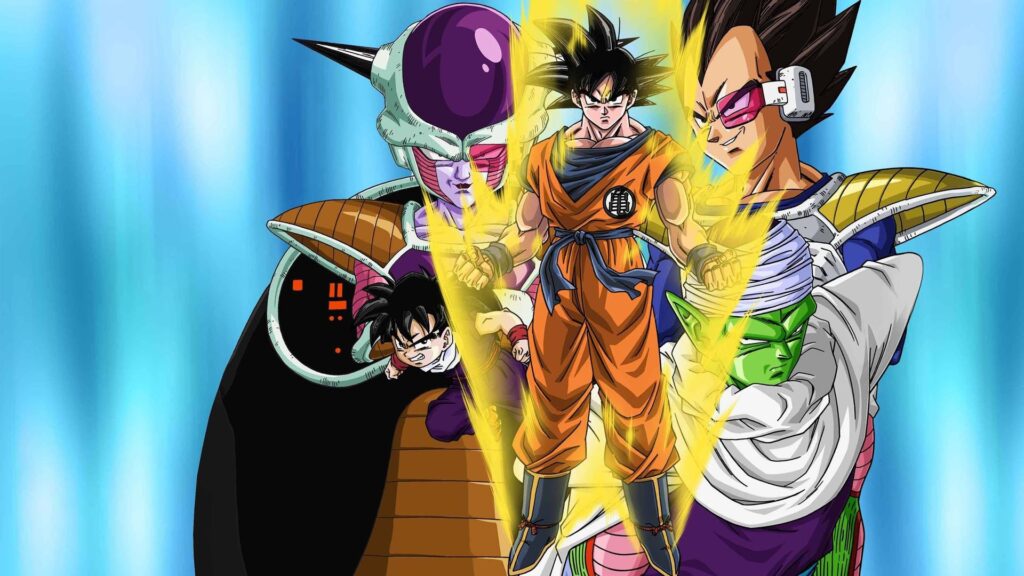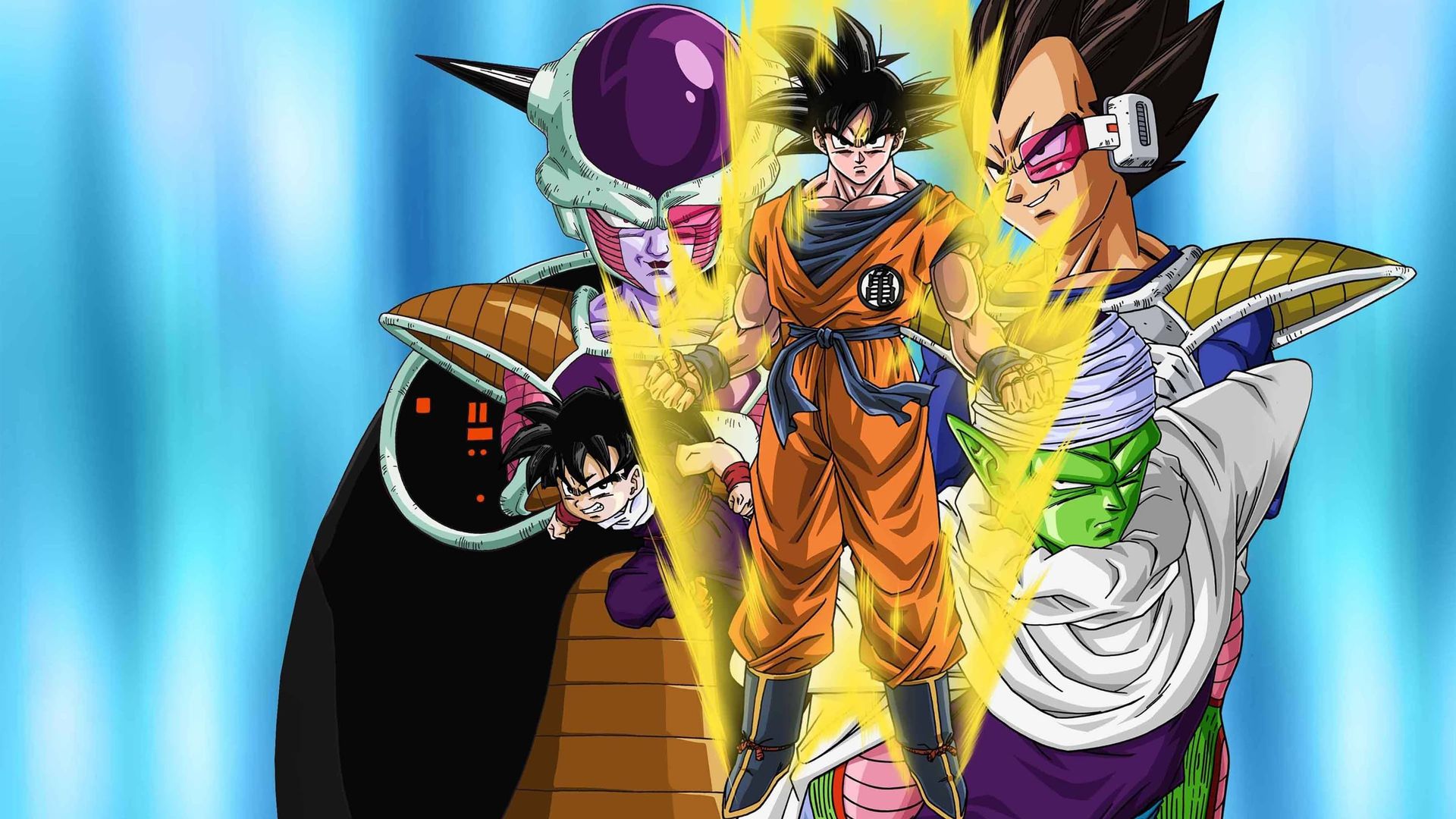
Dragon Ball Z Kai: A Streamlined, Modern Take on a Classic Anime
Dragon Ball Z, a cornerstone of anime history, captivated audiences worldwide with its epic battles, compelling characters, and overarching themes of perseverance and strength. However, its original run was not without its flaws. Lengthy filler arcs and pacing issues often detracted from the core narrative. Enter Dragon Ball Z Kai, a remastered and recut version aiming to address these shortcomings and deliver a more streamlined and faithful adaptation of Akira Toriyama’s manga. This article delves into the creation, impact, and legacy of Dragon Ball Z Kai, examining its improvements, criticisms, and lasting appeal within the Dragon Ball franchise.
The Genesis of Kai: Addressing Pacing and Filler
By the late 2000s, the popularity of Dragon Ball Z remained strong, but the original anime’s pacing had become a common point of criticism. Many fans felt that the anime deviated too far from the manga, introducing numerous filler episodes and stretching out battles unnecessarily. Toei Animation recognized this issue and decided to create Dragon Ball Z Kai (known as Dragon Ball Kai in Japan), a project designed to present a more concise and action-packed version of the story.
The primary goal of Dragon Ball Z Kai was to remove filler content and adhere more closely to the manga’s storyline. This involved significant editing, cutting out extraneous scenes, and re-pacing the narrative. The result was a faster-paced and more focused viewing experience, appealing to both longtime fans and newcomers alike. The series also received a visual upgrade, with remastered visuals and a refreshed color palette, bringing the animation quality closer to modern standards.
Key Improvements and Changes in Dragon Ball Z Kai
Several key changes distinguished Dragon Ball Z Kai from its predecessor:
- Filler Removal: The most significant change was the elimination of filler episodes and scenes. This streamlined the narrative, focusing on the core plot points and character development as intended by the manga.
- Remastered Visuals: The animation was remastered in high definition, offering a cleaner and more vibrant visual experience. This made the series more appealing to modern audiences accustomed to high-quality animation.
- Re-recorded Audio: The voice acting was re-recorded with the original Japanese cast, providing a fresh take on the characters’ performances. While the English dub also featured some returning voice actors, there were notable changes, sparking debate among fans.
- Updated Music: The original soundtrack was replaced with a new score composed by Shunsuke Kikuchi (for the Japanese version initially), although this decision proved controversial and eventually led to a return to some of the original music in later releases.
- Pacing Adjustments: The overall pacing was significantly improved, with battles and storylines progressing at a faster rate. This kept viewers engaged and prevented the narrative from becoming bogged down in unnecessary details.
Reception and Criticisms of Kai
Dragon Ball Z Kai was generally well-received, with many fans praising its improved pacing and faithfulness to the manga. The removal of filler content was a major selling point, allowing viewers to experience the core story without unnecessary distractions. The remastered visuals also contributed to the series’ appeal, making it more visually appealing to a contemporary audience. [See also: Dragon Ball Super: A Continuation of the Legacy]
However, Dragon Ball Z Kai was not without its criticisms. Some fans lamented the removal of certain scenes and character interactions that, while technically filler, added depth and humor to the original series. The updated soundtrack also proved divisive, with many viewers preferring the iconic music of the original Dragon Ball Z. The English dub, in particular, faced scrutiny due to casting changes and perceived inconsistencies in voice acting quality.
Another point of contention was the censorship applied to certain scenes in Dragon Ball Z Kai. While the original Dragon Ball Z was already subject to some censorship, Kai often went further, removing or altering scenes deemed too violent or suggestive for its target audience. This led to criticism from some fans who felt that the censorship detracted from the series’ artistic integrity.
The Impact and Legacy of Dragon Ball Z Kai
Despite its criticisms, Dragon Ball Z Kai played a significant role in revitalizing the Dragon Ball franchise and introducing it to a new generation of fans. Its streamlined narrative and improved visuals made it more accessible to viewers who may have been intimidated by the length and pacing of the original series. Dragon Ball Z Kai also served as a bridge between the original Dragon Ball Z and the subsequent Dragon Ball Super, helping to maintain interest in the franchise and paving the way for new stories and characters.
The success of Dragon Ball Z Kai demonstrated the enduring appeal of the Dragon Ball franchise and the demand for high-quality adaptations that stay true to the source material. It also highlighted the importance of addressing pacing and filler issues in long-running anime series, setting a precedent for future remastered and recut versions of classic anime. The project ultimately proved that a focused and visually updated presentation could reinvigorate a beloved series for both old and new audiences.
Dragon Ball Z Kai: The Final Chapters and Beyond
The initial run of Dragon Ball Z Kai covered the Saiyan Saga through the Cell Saga. However, due to licensing issues, the Majin Buu Saga was initially omitted. Later, a revised version titled “Dragon Ball Z Kai: The Final Chapters” was produced to adapt the Majin Buu Saga, completing the entire Dragon Ball Z storyline. This version maintained the same visual and audio standards as the earlier episodes, providing a cohesive and satisfying conclusion to the series.
Dragon Ball Z Kai: The Final Chapters addressed the remaining criticisms regarding the absence of the Majin Buu Saga, ensuring that fans could experience the complete Dragon Ball Z story in a streamlined and modern format. This addition further solidified Dragon Ball Z Kai’s legacy as a definitive adaptation of the Dragon Ball Z manga.
Comparing Dragon Ball Z and Dragon Ball Z Kai: Which is Better?
The question of whether Dragon Ball Z or Dragon Ball Z Kai is “better” is subjective and depends on individual preferences. Dragon Ball Z offers a more comprehensive and nostalgic experience, with its iconic soundtrack and additional character moments. However, its pacing issues and filler content can be a drawback for some viewers. Dragon Ball Z Kai, on the other hand, provides a more streamlined and action-packed experience, with improved visuals and a focus on the core storyline. However, some fans may miss the additional content and nostalgic charm of the original series.
Ultimately, both Dragon Ball Z and Dragon Ball Z Kai have their merits and appeal to different audiences. Fans who prioritize pacing and faithfulness to the manga may prefer Dragon Ball Z Kai, while those who value a more comprehensive and nostalgic experience may prefer the original Dragon Ball Z. [See also: Dragon Ball GT: A Non-Canon Sequel]
The Enduring Appeal of the Dragon Ball Franchise
The success of Dragon Ball Z Kai underscores the enduring appeal of the Dragon Ball franchise. Created by Akira Toriyama, the Dragon Ball series has captivated audiences worldwide with its compelling characters, epic battles, and themes of perseverance, friendship, and self-improvement. The franchise has spawned numerous anime series, movies, video games, and merchandise, becoming a cultural phenomenon that transcends generations.
The Dragon Ball franchise’s ability to adapt and evolve while staying true to its core values has contributed to its longevity and popularity. Whether it’s the original Dragon Ball, Dragon Ball Z, Dragon Ball Z Kai, or Dragon Ball Super, the franchise continues to resonate with fans of all ages, solidifying its place as one of the most influential and beloved anime series of all time. The impact of Dragon Ball Z Kai on the franchise is undeniable, proving that even classic series can benefit from modern updates and a focus on delivering the best possible viewing experience.
In conclusion, Dragon Ball Z Kai stands as a testament to the enduring power of the Dragon Ball franchise and the value of revisiting and refining classic stories for modern audiences. Its streamlined narrative, improved visuals, and overall focus on quality have made it a popular and influential adaptation that continues to resonate with fans around the world. Whether you’re a longtime fan or a newcomer to the series, Dragon Ball Z Kai offers a compelling and action-packed journey through the world of Dragon Ball Z.

